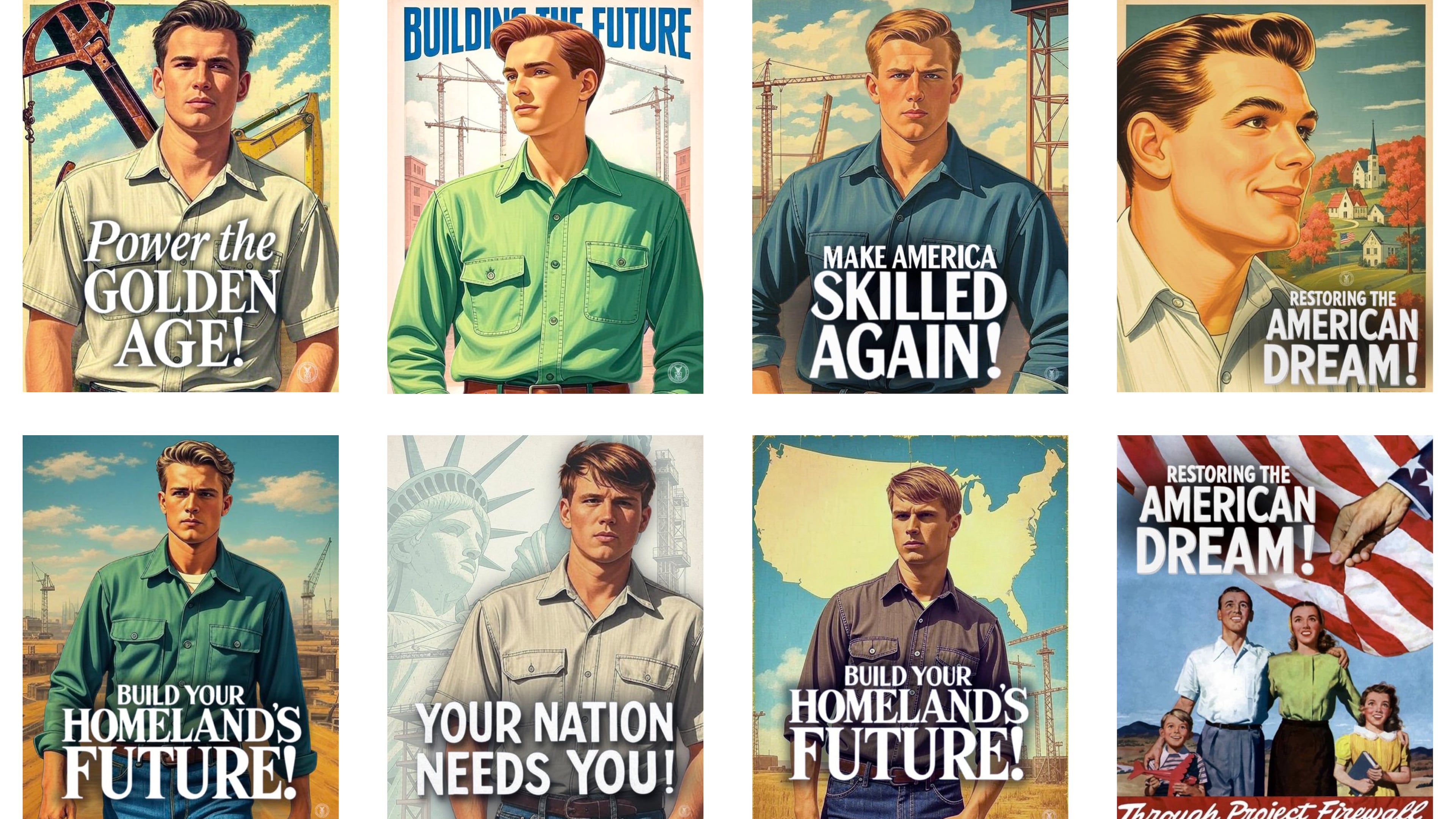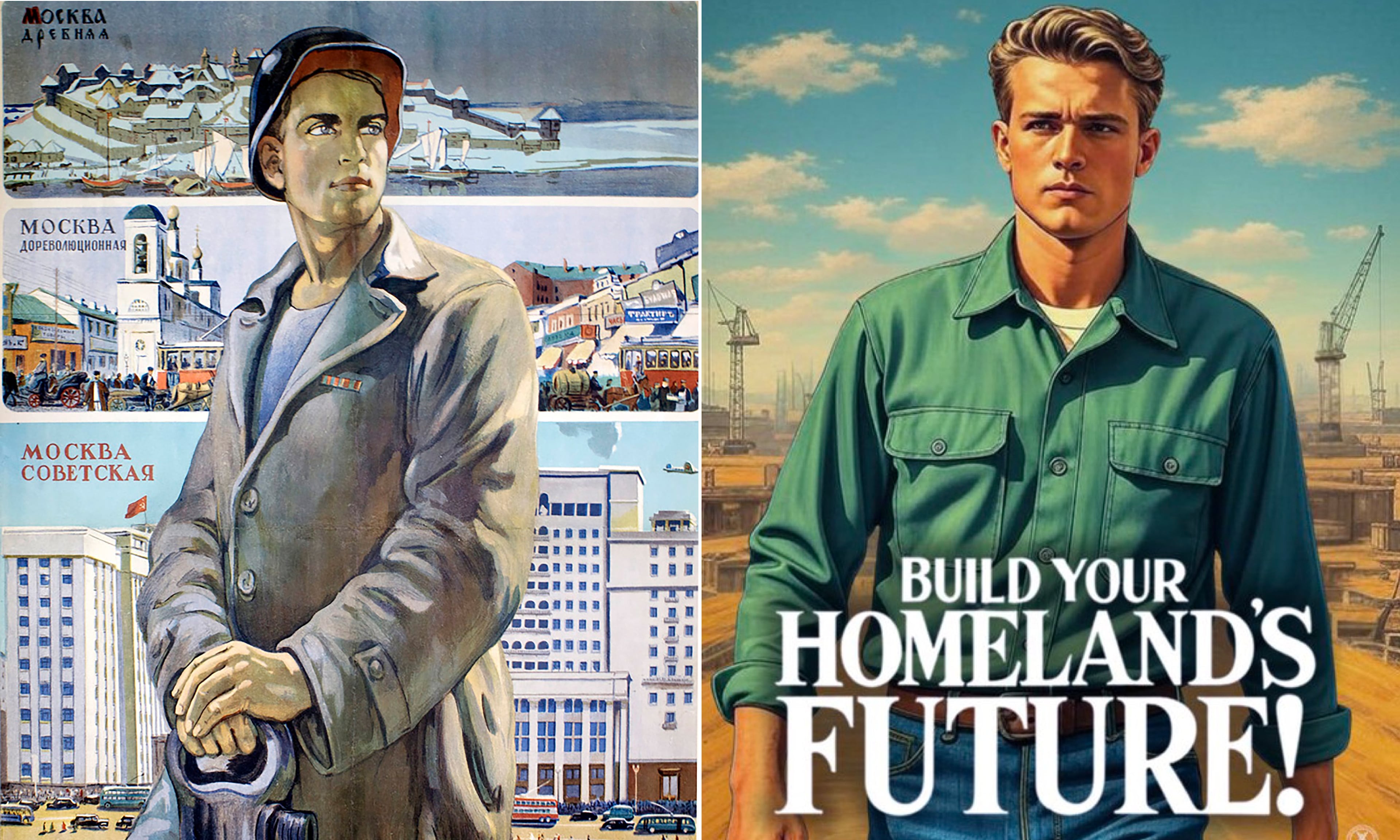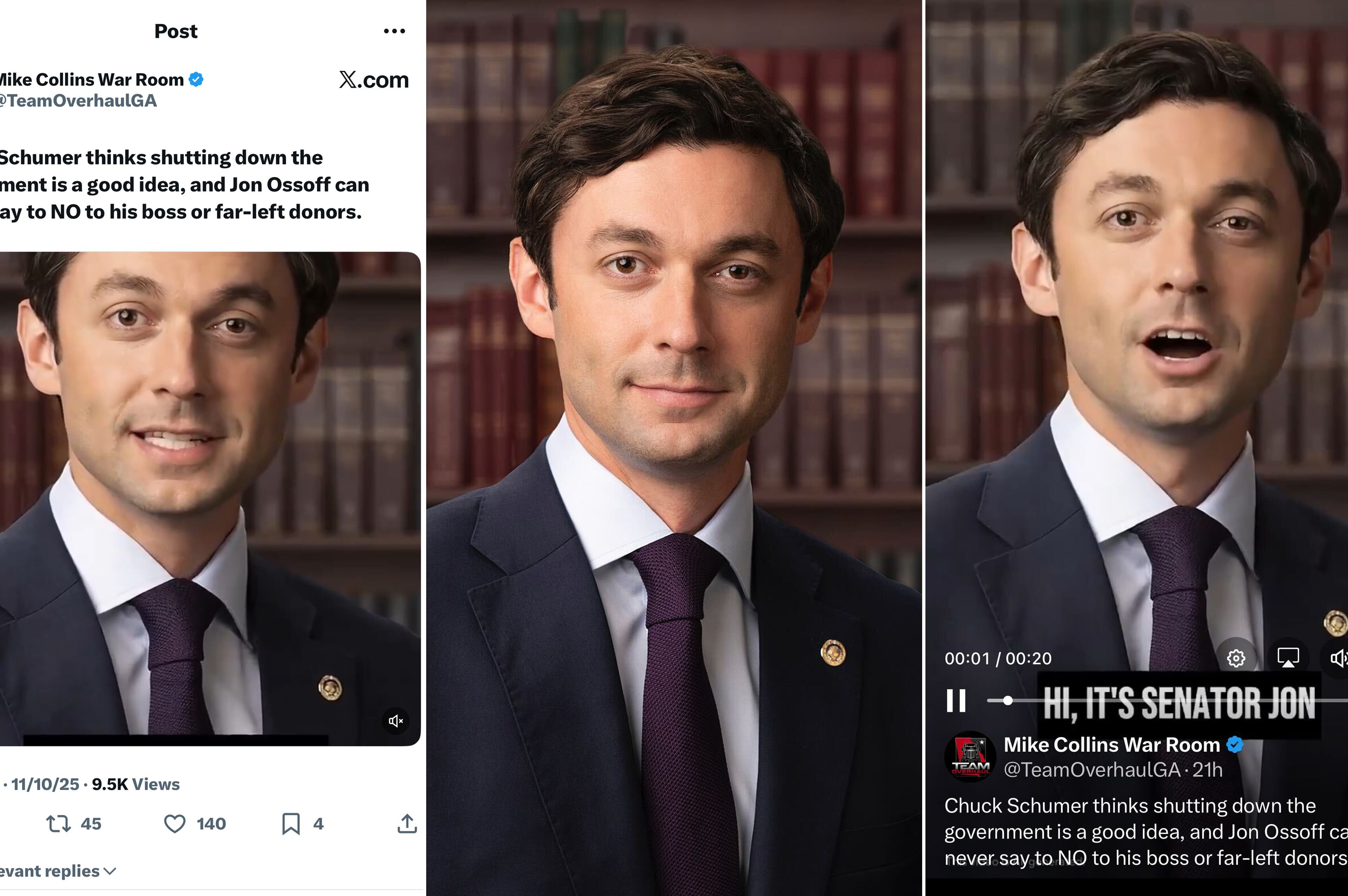Labor Department’s anti-DEI campaign is Norman Rockwell meets Josef Stalin

In September, the U.S. Department of Labor launched Project Firewall, an objective aimed at employers abusing the visa process to get skilled workers.
The Donald Trump administration argues Americans should get those high-paying jobs. Employers often counter there are not enough skilled Americans for them because they spend too much time gawking at their foreign-made electronic devices instead of studying math or science.
But I digress.
The Labor Department, in its zeal to win over the American public — or at least some of that public — is pushing an ad campaign with numerous posters evoking another era: very 1950s, very Caucasian, very idealistic.
One poster has the stereotypical 1950s TV family of four: Older boy. Younger sister. Pretty, white-gloved mom. Lantern-jawed dad. All sit in church with an American flag in the background. The text says that Project Firewall ensures “American Workers have a fair shot at the American Dream.”
The poster is headlined, “A dream worth fighting for.”
Another has a similar family walking hand-in-hand toward a Cape Cod-style home. In the background is a church and a large smoke-belching factory, apparently where dad will stride off after donning his dungarees.
“RESTORE THE AMERICAN DREAM,” it urges in all caps.
As you scroll through the Labor Department’s X feed, you’ll find many posters carrying the visage of heroic-looking young men, sleeves rolled up and staring intently, with cranes and heavy machinery behind them.
“Power the Golden Age!” says one.
“Americans First.” says another.
Or, “Your nation needs you.”
They evoke a masculine motif, although the fellows in the posters look like they are considering their next modeling gig.
Now, my brother, numerous cousins and uncles and many friends work or worked in the trades. None looked anything like the poster boys.
Granted, they are not real. They’re iconography of another era, an unspoiled past where dad could work, mom could bake and Sonny and Sis could play on their front lawn, unafraid that Mexicans would take dad’s job.
After pondering more than a dozen images, I asked myself: Doesn’t anyone in Labor’s art department have a darker pencil for skin tones?
Granted some 60% of Americans are white. But 40% aren’t.
There is a very definite streak of propaganda going on here.

One critic likened it to the Nazi era. But I think that misses the mark.
It’s more Norman Rockwell meets Josef Stalin. There’s a real old-timey Soviet-style feel here, which the MAGA brainchilds who dreamed it up would dispute. Remember, anyone they disagree with are called “socialists.”
But it is clear the Soviet posters from the 1950s and 1960s have very similar-looking, determined fellows, although framed by Cyrillic lettering.
Aside from its message of Return America to its Storied Past, the ads have a deeper purpose. They are part of a deliberate anti-DEI campaign being waged by the Trump administration.
You know that guy who incessantly complains about Blacks and Hispanics appearing in beer and insurance ads because of diversity initiatives? Well, that guy will love what Labor’s got cooking.
Around the time Project Firewall was announced, Kelly Loeffler, Georgia’s fleeting U.S. Senator, who now heads the Small Business Administration, toured Gwinnett Technical College with Labor Secretary Lori Chavez-DeRemer.
The secretary’s father was a Mexican American Teamster and she’s been described as “a mainstream Republican” and sensible. But “mainstream” and “sensible” eventually get squeezed out in the GOP.
Gwinnett Technical College has two campuses, in Alpharetta and Lawrenceville, and the student population looks nothing like the Labor Department posters. A college report from 2024 has enrollment at 39% Black students, 24% Hispanic, 23% white and 9% Asian. A quarter are over 30 years old, retooling their careers.
I stopped at the Lawrenceville campus and found students ranging from 16 to 29. A couple were veterans, and all of the hues mentioned above walked about. To a person — I spoke with eight — they were focused and optimistic.
Wilson Eberhart is 16 and taking electrical engineering, getting a “head start” on his career. He figures to be fixing machines and electrical systems in manufacturing. Or maybe something else. Remember, he’s just 16.
“People think it’s hard to get jobs,” he said. “They’re there. But people just don’t know where they are.”
I showed him several Labor Department posters. Eberhart, who’s Black, smiled.
“It looks like the World War II era; it’s emblematic about a fear, that it’s hard to get work,” he said. “It’s the stereotypical picture of Americans. It’s trying to go back to another time.”
Jeffrey Bustillo, a sophomore in business management, wants to take over the painting business that his father, a Honduran immigrant, started 25 years ago.
“I’m learning how businesses start up — the risks, what laws they need to abide by,” he said. The students there, he said “are trying to get ahead; they’re optimistic.”
Bustillo also works in the family business. “Now, it’s just four of us,” he told me. “I’ll try to grow it.”
Put that on a poster.


